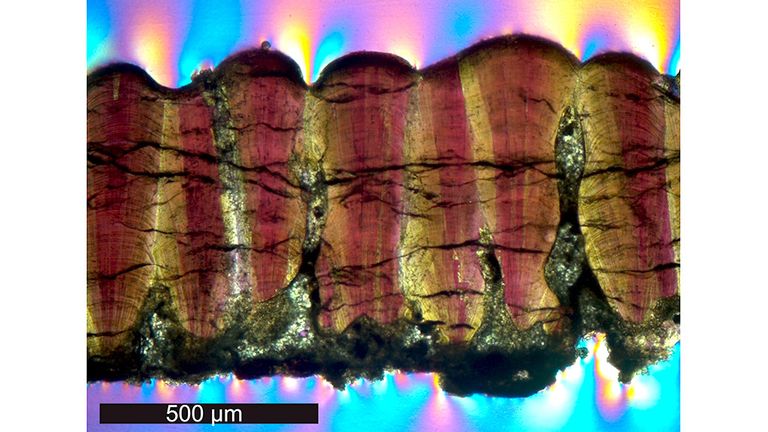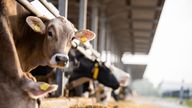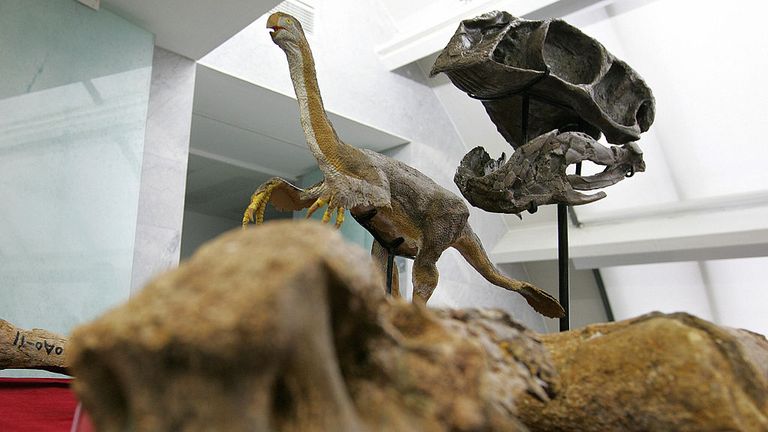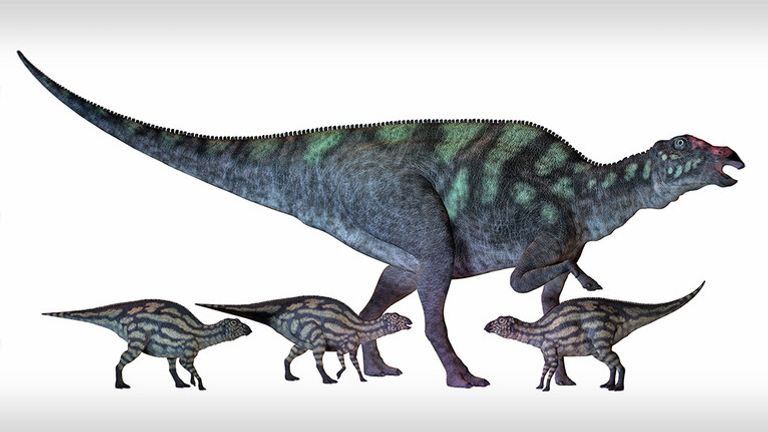Eggshells suggest dinosaurs were actually warm-blooded
The new research from Yale has reignited controversy regarding whether dinosaurs were warm or cold blooded.
Tuesday 18 February 2020 14:13, UK
The debate over whether dinosaurs were cold-blooded like modern reptiles or warm-blooded like modern birds has been reignited by a new study analysing fossilised eggs.
New research by scientists at Yale in the US has analysed the chemistry of dinosaur eggshells, finding the way oxygen and carbon atoms were arranged within them suggested they were formed within warm-blooded bodies.
"Dinosaurs sit at an evolutionary point between birds, which are warm-blooded, and reptiles, which are cold-blooded," said Dr Robin Dawson, who conducted the research.
"Our results suggest that all major groups of dinosaurs had warmer body temperatures than their environment," Dr Dawson added, regarding the research conducted while she was a doctoral student in geology and geophysics at Yale.
The research follows a new theory which suggests that as dinosaurs evolved into birds they shrank in order to become warm blooded.
Reptiles are cold blooded, or ectothermic, which means they aren't capable of controlling their own body temperature.
Mammals and birds, which are directly descended from a group of dinosaurs called theropods, are warm blooded, or endothermic, meaning they produce their own body temperature.
Generating your own heat is an expensive lifestyle for animals and requires a lot more energy consumption.
However, it provides benefits as it allows animals to function at a higher level when there aren't any external heat sources nearby, such as during the night or winter.
Dr Dawson is the lead author of the new study in the journal Science Advances which tested eggshell fossils from three major dinosaur groups.
Using a technique called clumped isotope paleothermometry, the researchers figured out what the internal temperatures of dinosaurs were as the eggs inside them formed.
Shells from species including the meat-eating theropod Troodon, the duck-billed Maiasaura, and the Megaloolithus, were all found to have been grown at temperatures significantly above that of the environment around them.
"What we found indicates that the ability to metabolically raise their temperatures above the environment was an early, evolved trait for dinosaurs," Dr Dawson said.
One of the study's implications concerns the evolution of feathers in regards to their development in birds.
"It's possible that dense feathers were primarily selected for insulation, as body size decreased in theropod dinosaurs on the evolutionary pathway to modern birds," Dr Dawson said.
"Feathers could have then later been co-opted for sexual display or flying."






